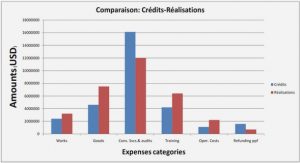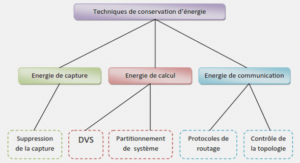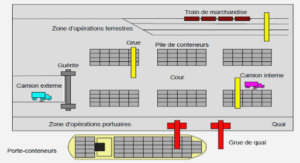Microscale modelling of atmospheric flows
Nowadays with easy access to meteorological data, in the form of e.g. a wind atlas, it may be considered straightforward to plan a wind energy project. But in reality this information alone is not sufficient to plan entire wind farms. Detailed local information as a result of wind measurement campaigns of minimum ∼ 1 year (Burton et al., 2001; IEC 61400-1, 2005) are required. These measurements are extracted from anemometers set on masts commonly placed in a few locations. The measurement results from this limited sample then must be spatially extrapolated to produce a wind map of the whole site. For this approach, microscale modelling gives reliable predictions (Sumner et al., 2010). The microscale modelling of the atmosphere is found within a spatial scale of several hundred meters down to 0.01 m and within a time scale of seconds to minutes. Here the main force involved is the friction generated by the surface. Microscale modelling consists in using computational fluid dynamics (CFD) to solve the partial differential equations that describe atmospheric motions.
CFD discretizes these partial differential equations in order to solve them algebraically, leading to acceptable results. These equations are easily solved when flat terrain cases are analyzed; nevertheless, these ideal cases are rarely present. In reality, the attractiveness of sites located in complex terrains encourages the use of CFD for wind farm purposes. Particularly because in these complex terrain the wind profile may not follow a predicted logarithmic behavior and wind speed accelerations may be present (Panofsky & Ming, 1983). Eventually, these accelerations bring two possibilities: higher power generation and/or possible loads in the turbines with an implicit increase of the maintenance costs (Ayotte, 2008). Many wind flow models have been proposed for a wide variety of exigent accuracy in turbulence, and they are mainly differentiated in their development and computational costs. Models based on a linearized assumption have been popular in the last few decades in the wind industry; to mention a few: WAsP, MS-Micro, Raptor, Raptor-NL. These models are known to provide reliable results at economical computational cost for flat terrain cases (Petersen et al., 1998); nevertheless, for cases of complex terrain they will weaken the treatment of frictional and thermal effects (Lange & Focken, 2006) by under- and over-estimating the resource (Landberg et al., 2003). At the other extreme, more sophisticated models that focus on the nonlinear behavior of the flow, like Large-Eddy Simulations (LES), provide greater detail of the turbulence and intermittently separated flow which are the main characteristics of complex topographies (Ayotte, 2008). Their improved ability to capture turbulent behavior opens the question if their expensive computational resources are justified and necessary for the wind energy community. Models based on the Reynolds-Averaged Navier-Stokes (RANS) equations sit somewhere in the middle of this spectrum: their solutions respect mass, momentum, and energy conservation in the mean variables. They model turbulent effects in a somewhat ad hoc manner that has been well accepted for the purposes of wind energy forecasting (Richards & Hoxey, 1993; Kim et al., 2000; Hargreaves & Wright, 2007; Sumner et al., 2010).
RANS validation over complex terrain
Two difficulties exist on assessing resources in complex topographies: no available experimental data and no systematic comparison of different wind flow models (Bechmann et al., 2011). To face these limitations, several measurement campaigns over complex terrain have been carried out to deliver experimental data in order to pursue comparisons. Some of these projects are: Black Mountain (Bradley, 1980), Blashaval Hill (Mason & King, 1985), Askervein Hill (Taylor & Teunissen, 1987), Kettles Hill (Salmon et al., 1988), Hjardemål (Emeis et al., 1993) and Bolund hill (Bechmann et al., 2009; Berg et al., 2011). Among these projects, Askervein Hill is the most commonly used field campaign as it is well documented and represents a proper benchmark for microscale modelling (Bechmann et al., 2011). The field measurement campaign was performed in the early 1980s over the 116 m-high Askervein Hill located in Scotland. Several computational models have been tested to replicate the experimental data of this project. Both linear models (e.g. WAsP) and non-linear models (based on RANS equations) have been shown to provide good agreement with the hilltop speed-up factor; however, non-linear models are much more accurate on the lee side. A brief description of some of the studies that used RANS modelling are chronologically presented: First, Raithby et al. (1987) used a RANS approach and obtained accurate results albeit with over-predicted turbulence levels. Second, Kim & Patel (2000) and Kim et al. (2000) focused on the wall treatment and used the renormalization group (RNG) model1 to deliver improved predictions in the recirculation zones.
Third, in an effort to improve lee-side predictions, Castro et al. (2003) used an unsteady Reynolds-Averaged Navier-Stokes (URANS) model to analyze the low frequency unsteadiness of the flow in the hill’s wake; also, they focused on the roughness characterization and justified the used of a coarse grid. As a result, Castro et al. (2003) predicted the wind speed at 10 m AGL in good agreement with the experimental data but with an overestimated k in the upstream area. Finally2, Prospathopoulos & Voutsinas (2006) concluded that by using a RANS solver with the proper refinement in the vertical and main flow directions, and with the appropriate roughness distribution and boundary conditions, satisfactory results are obtained. In this context, the present work continues the tradition of RANS model validation against experimental data, but a) for a more difficult flow situation involving complex terrain and forest cover; and b) explicitly evaluating the uncertainty and its impact in the context of wind energy development.
Forest modelling in atmospheric flows As part of the scope of this master’s thesis, the effect of a forest will be considered. This effect is tackled via two models: a displacement height model and a canopy model. The displacement height model assumes an average tree height with a logarithmic wind profile starting from this edge (Stull, 1988). Several studies have been developed with this method like the work of Raupach (1994) and Verhoef et al. (1997), which have given promising results. Additionally, the practicality and required modest computational resources make this model an attractive tool for wind flow modelling over forested sites. Nevertheless, this method has two main limitations: 1) it is difficult to implement for a non-homogeneous forest, especially when the variation in the average tree height becomes large; and 2) it does not consider the aerodynamic drag due to the particular foliage, which can considerably impact the accuracy of the wind speed predictions, especially with season changes. In order to take into account the mentioned limitations, canopy models have been developed. The canopy model aims to more accurately represent the physical action of the forest by calculating the pressure loss in a porous media. This model was originally developed in the work of Svensson and Haggkvist (1990) which gave good results on a qualitative basis. Subse- quently, their work motivated further research to compare the model with field measurements as done in the work of Liu et al. (1996).
Later, improvements in the canopy model with attention to the physical characteristics of the forest were achieved in the work of Katul et al. (2004) and Lopes da Costa et al. (2006). This state of the art has been implemented in several computational codes with attention to the atmospheric boundary conditions (i.e. Dalpé and Masson (2008)) and complex topographies (i.e. Jeannotte (2013), Arroyo et al. (2014), Boudreault et al. (2014), and Grant et al. (2016)). The canopy model is characterized by requiring detailed information of the physical characteristics of the forest. But this information represents a constraint, mainly because it is obtained by special measurement methods that are not always available for a given forest. Some of these methods are destructive testing, satellite remote sensing, LiDAR sensing, and stereoscopic particle image velocimetry measurements; detail of theses methods are found in the cited literature (Chen & Cihlar, 1996; Omasa et al., 2007; Desmond et al., 2014; Boudreault et al., 2015). The specific information derived from these methods can lead to accurate results for the wind flow modelling (without adding computational expenditures), as presented in the work of Desmond (2014). But what happens with limited information? Can limited physical characteristics of the forest give reasonable results for the prediction of the wind flow? These questions will be addressed when the validation of the canopy model is presented in chapter 3
|
Table des matières
INTRODUCTION
CHAPTER 1 LITERATURE REVIEW
1.1 Wind energy yield forecasting
1.1.1 Wind assessment
1.1.2 Microscale modelling of atmospheric flows
1.1.2.1 RANS modelling of atmospheric flows
1.1.2.2 RANS validation over complex terrain
1.1.2.3 Forest modelling in atmospheric flows
1.1.2.4 Speed-up factor and its error
1.2 Uncertainty propagation in wind farm energy yield calculations
1.2.1 Annual energy production
1.2.2 Uncertainty in capacity factor due to modelling
CHAPTER 2 METHODOLOGY
2.1 Physics of the atmospheric boundary layer
2.1.1 Thermal stratification
2.1.2 Effects of complex topographies
2.2 Mathematical model
2.2.1 Fundamental equations
2.2.2 RANS modelling of the atmospheric boundary layer
2.2.3 Turbulence closure
2.2.4 Forest modelling
2.2.4.1 Displacement height model
2.2.4.2 Canopy model
2.3 Numerical method
2.3.1 Discretization
2.3.1.1 Pressure-velocity coupling
2.3.2 OpenFOAM
2.3.3 Physical domain and mesh
2.3.3.1 Pretreatment of topography and roughness maps
2.3.3.2 Mesh generation
2.3.4 Boundary conditions
2.3.4.1 Inlet boundary
2.3.4.2 Outlet boundary
2.3.4.3 Top boundary
2.3.4.4 Ground boundary
2.3.5 Initialization and convergence
CHAPTER 3 VALIDATION OF FOREST MODELLING
3.1 Introduction
3.2 2D case with cyclic boundary conditions
3.2.1 Results
3.3 2D case with inlet-outlet boundary conditions
3.3.1 Sensitivity analysis for friction velocity
3.3.2 Sensitivity analysis for z0 inlet
3.3.3 Results
3.4 Flat terrain 3D case
3.4.1 Grid independent solution
3.4.2 Analogous 2D case
3.4.3 Results
CHAPTER 4 WIND FLOW MODELLING OVER A REAL SITE
4.1 Case study
4.1.1 Site description and instrumentation
4.1.2 Data treatment
4.2 Simulations setup
4.2.1 Model cases
4.2.2 Pretreatment of roughness and topography
4.2.3 Boundary conditions and initialization
4.2.4 Mesh
4.2.4.1 Grid independent solution
4.3 Results
4.3.1 Results in terms of mean
4.3.2 Results in terms of mean, mode and median per bin
4.3.3 Linearity
4.3.4 Uncertainty in capacity factor due to RANS modelling
CONCLUSION AND RECOMMENDATIONS
APPENDIX I PRETREATMENT OF TOPOGRAPHY AND ROUGHNESS MAPS
APPENDIX II CASE SETUP IN OPENFOAM
APPENDIX III CANOPY MODEL
BIBLIOGRAPHY
![]() Télécharger le rapport complet
Télécharger le rapport complet






